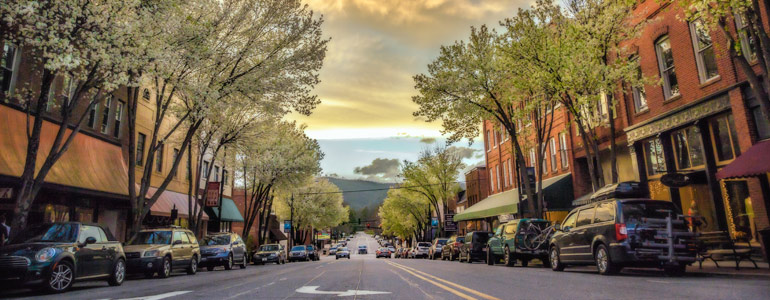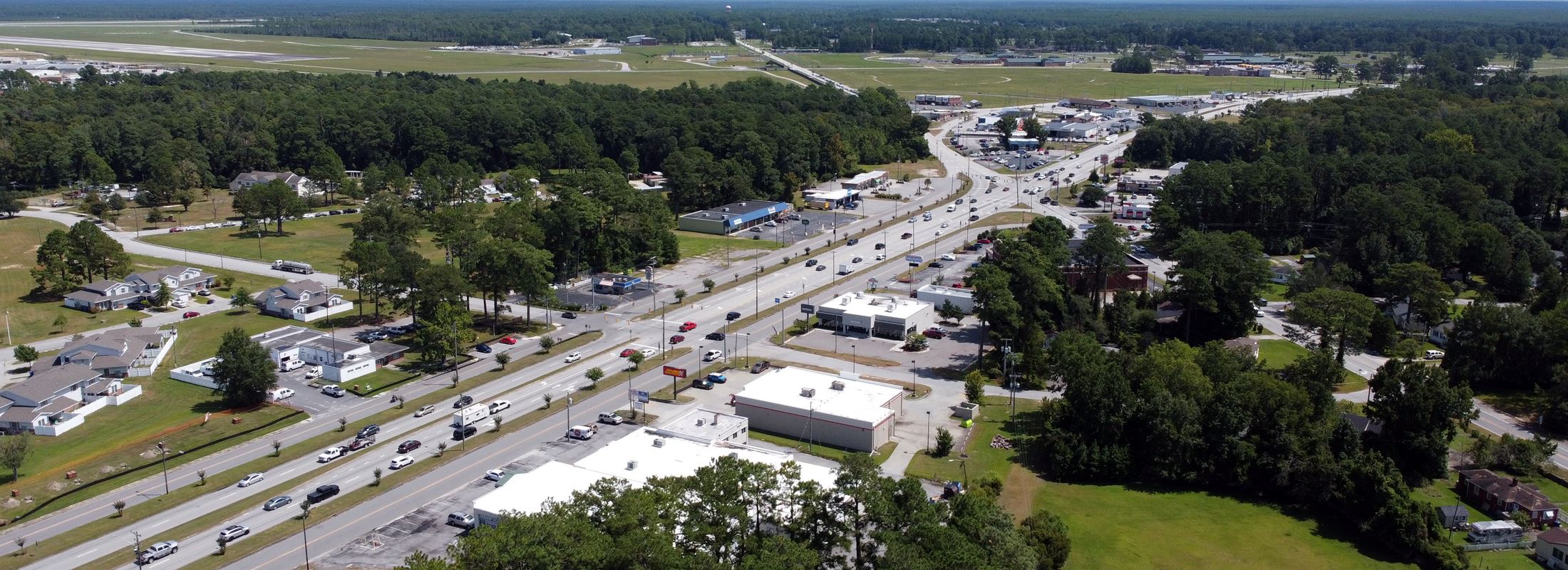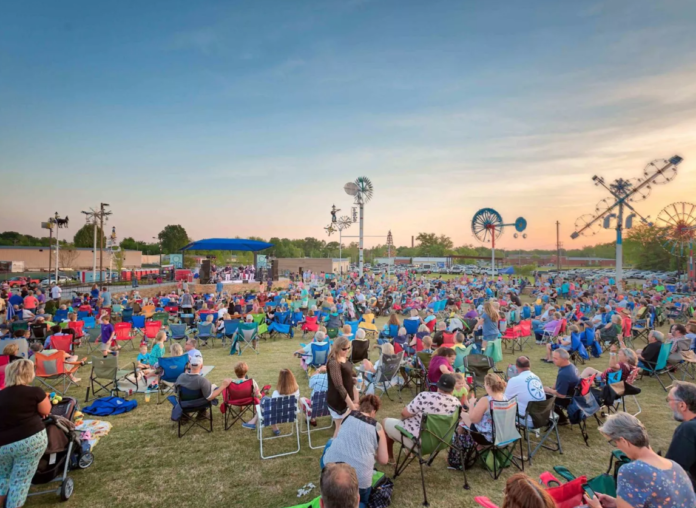The American Rescue Plan offers a generational opportunity for our municipalities, not just to recover from the pandemic, but to thrive well into the future. It is this forward-looking aspect of the ARP that is most consequential. How best can we utilize this money to create a lasting impact?
All across North Carolina, cities and towns are developing plans and programs specifically geared towards this question, and history shows us that these projects will be successful. When our municipalities receive financial support, they achieve substantial successes. Cities get the job done.
This ongoing series will showcase those projects, plans, and transformational investments, both to highlight the end-to-end impressive work of our municipalities and to share best practices with other cities and towns.
Wilson Makes Far-Reaching Investments Towards Long-Term Transformation
Wilson, NC
Population: 47,851
Funds Received: $15.7 million
Plan
- Kenan & Jackson Street water, sewer, and storm drain improvements
- Sewer outfall repair
- RIDE transit expansion
- Housing redevelopment
- Commercial redevelopment
- Gig East programs
- Demolition of substandard structures
- Splash pad at Reid Street Community Center
- Wiggins Mill Reservoir Park renovation
- Public Safety Video Analytics software
- Employee vaccine incentive reimbursement
Strategy
- Touch every corner of the city by funding numerous categories of investment: community development, economic development and entrepreneurship, infrastructure, housing, transit, and public spaces.
- Utilize recently completed strategic plans to receive input and understand community need.
- Be consistent with existing priorities, but with now expedited timelines and greater levels of investment.
- Use money to create stability in innovative programs, such as Gig East.
- Focus on underserved communities.
Wilson is experienced in pursuing new ideas to serve the community. That mission has been on clear display over the past decades, seen through both their thoughtful investments and innovative offerings of public amenities. By way of a public park, they sparked a downtown renaissance; by leveraging investments and partnerships, they developed a burgeoning innovation economy. It’s not by accident, but rather through the work of local leaders that some have called Wilson “the next innovation hub in North Carolina.”
With that foundation firmly established, the American Rescue Plan’s influx of support offers an unprecedented opportunity to Wilson. They’re taking full advantage.
“This accelerates our ability to meet the demand and requests of both the people living here and the people coming here,” said Wilson’s Communications and Marketing Rebecca Agner. “I see it really helping us focus and make sure that we are on track to have the quality-of-life amenities and stay ahead of the demands that we’re seeing here.”
Wilson’s investments touch every corner of town, and they begin with the focus intended by the American Rescue Plan (ARP): to support the economic recovery of communities most impacted by the COVID-19 pandemic. The housing programs will address substandard structures in many low-income neighborhoods, the transit expansion aims to reduce transportation barriers for the city’s residents, and the commercial redevelopment project—while not in a designated census tract—sits across the street from one, so it will have a runoff positive effect for those neighborhoods as well as the city as a whole.
They designed that support using previous citizen input, acquired through the city’s recently established Capital Improvement Plans and other strategy plans, and ongoing citizen input, acquired by surveys primarily for transit purposes. That input created a de-facto map of need, especially concerning transit. “We’ve been surveying, on a fairly regular basis, our users,” said Wilson’s Chief Planning and Development Officer Rodger Lentz. “What we’ve found with RIDE transit is that about half the trips are getting people to work, 70 to 80 percent of people that use the service don’t have access to a car… When we talk to employers, we find that transportation is one of the top barriers to being able to keep people employed.”
Wilson also is making sizeable infrastructure investments. The sewer and stormwater projects are needed improvements in key areas: one providing the necessary infrastructure for a commercial district and growing residential area; and one in their flourishing downtown. The park investments—Wiggins Mill and River Street Community Center—get at the city’s quality-of-life goals, while also meeting some pandemic-related needs. During the onset of COVID-19 in 2020, the city’s public spaces were at capacity. This investment will fix that issue.
Like with the community development projects, these infrastructure investments were also a part of previous strategic discussions and plans. Through ARP, however, they can be addressed now, rather than over the course of many budget cycles. “We knew many of these projects needed to be addressed in the next few years, and the ARP funding gave us a great opportunity to speed that up and get it done more quickly,” said Agner.
Lastly, Wilson is addressing its forward-looking innovation strategy with a $1 million investment towards Gig East, the local entrepreneurial hub. Gig East programs typically rely on outside grant funding, according to Agner. By leveraging ARP money, those programs—and Gig East as a whole—will benefit from a sustained level of stability, all while freeing staff up to focus not on pursuing funding, but on the core of Gig East’s work.
“This gets directly at our commitment to entrepreneurship and to encouraging innovation,” said Agner. “This is going to preserve those partnerships we have in place, free up our staff from having to constantly be in the mode of securing funding, and across the board, it keeps us stable and positions us very well for the future growth we expect to see in Wilson.”
“People have choices where to live, with remote working, cost of housing, and so on,” said Lentz. “Can Wilson be a community of choice? That’s something we’ve talked about for years here. We’re accomplishing that through amenities and quality of life.”
Administration
Preparation. Wilson did not need to think up new programs when ARP funding was received. Rather, by thoughtfully balancing the new level of investment, they were able to take existing priorities and shorten the timelines.
Citizen engagement. Also speaking to the town’s preparation and ongoing administrative successes, Wilson had a great deal of citizen input to use when crafting their ARP plan. Ongoing transit surveys and engagement efforts surrounding their recently completed strategic plans provided a roadmap for local officials to follow when determining how best to meet community needs.
Consistent strategy across spending categories. Wilson needed to balance several priorities when developing their plan. Primarily, they needed to directly address development needs among lower-income communities, to build needed infrastructure, and to sustain the city’s momentum in building an innovation economy. Their plan accomplishes each while detracting from none.
“Hurry up and wait.” The League advised this ARP strategy during 2021, and Wilson executed it. The “hurry up” urged cities to develop plans and begin critical discussions; the “wait” was needed as Treasury had not yet issued final guidance, so eligible spending was not entirely clear. Under this approach, Wilson put together a list of potential projects shortly after the passage of the program, well before Treasury’s issuance of the final rule, and determined each plan’s effectiveness toward overall goals. Then, when final guidance was ultimately published, Wilson was able to return to their list of proposals, judge each project’s eligibility, and quickly proceed.
 Brevard Strategizes Through Stormwater
Brevard Strategizes Through Stormwater
Brevard, NC
Population: 7,744
Funds Received: $2.52 million
Plan
- Stormwater improvements
- Bridge repairs
- Residential waterlines
The City of Brevard is a top tourist destination in western North Carolina, but having under 8,000 fulltime residents, the city’s American Rescue Plan distribution is relatively small. Their plan, then, was to make each dollar go as far as possible. They’ll accomplish that through infrastructure.
“For a small municipality, investing $2.5 million into infrastructure is a very big deal,” said Mayor Maureen Copelof. “These investments will last for decades.”
Strategy
- Invest in infrastructure to achieve long-lasting impact.
- Select projects strategically to let ARP funds work in conjunction with general funds.
Brevard’s foremost investment will be into stormwater. Setting aside $700,000 of ARP funds towards that category, the city is addressing areas with known stormwater issues, including some key commercial and recreational locations. Each of those areas was selected strategically, not only due to their importance to the community, but also because the city can coordinate its ARP projects with additional city-led initiatives.
For example, one area receiving stormwater improvement will be Times Arcade Alley, a street that hosts restaurants, shops, and various businesses, and that is regularly stricken with stormwater problems. It is also an area that needs certain aesthetic improvements. Brevard’s plan is to use ARP funds to fix the stormwater and, once the area is dug into, then use general funds to improve paving, add green space, and bury utility lines. The city is using the same approach towards stormwater improvements on Railroad Avenue. With ARP funds, Brevard will be installing catch basis; and once dug into, Brevard will be installing a pedestrian greenway with general funds. “We’re using a combination of funds to do several things at the same time,” said Mayor Copelof.
Brevard’s other two ARP expenses will also go towards critical infrastructure: the repairing of the 55-year-old Railroad Avenue Bridge, and the expansion of residential waterlines to serve the town’s growth.
“[ARP] is going to allow us to do projects that would be otherwise beyond the scope of our being able to do,” said Mayor Copelof. “It’s really going to allow us to leverage our funds.”
Administration
Focus on need. Stormwater repairs are not a peripheral agenda item for Brevard. Rather, it’s an absolute necessity, both for the city’s residents and businesses. According to the National Centers for Environmental Information, and as reported by Blue Ridge Public Radio, roughly 413 inches of rain fell in Transylvania County from January 2017 to December 2021, making it the wettest county in the state for that period. “If it there’s a heavy rain, you’re walking through a couple of inches of water in Times Arcade Alley,” said Mayor Copelof. Through ARP, that problem will be put to rest.
Two birds, one stone. To get the most our of their funding, Brevard tied in ARP uses with other long-term strategic plans. While digging to complete its stormwater repairs, the city will provide to residents new greenspaces, new greenways and other amenities.
 Havelock Invests in Infrastructure, Sets Up Economic Development
Havelock Invests in Infrastructure, Sets Up Economic Development
Havelock, NC
Population: 16,621
Funds Received: $3.32 million
Plan
- Highway 70 sewer outfall project
- Advanced Metering Infrastructure (AMI) project, upgrading the city’s water meter system
- Sewer plant well project
- Sewer SCADA System installation
- Emergency management employee shelter upgrades
- Improve building ventilation systems
- Personal protective equipment
Strategy
- Align projects with city’s strategic economic development goals.
- Focus on water and sewer upgrades and repairs—the city’s biggest area of need.
- Meet the needs of the city’s biggest stakeholder: the military base.
- Use one-time money to upgrade technology, thus reducing future resource strain.
The City of Havelock is using its ARP distribution primarily to meet its water and sewer needs. This is not a priority that arose overnight. Rather, it’s been a long-term goal of the City’s leadership, and using ARP funds towards the Highway 70 sewer outfall makes strategic sense for a number of reasons. It resolves a much-needed infrastructure problem, it allows Havelock to exit a sewer SOC (which is the mechanism of the NC Department of Environmental Quality to identify and mandate specific system repairs, fines, and a timeline schedule for repairs), and, being a one-time expense, it fits nicely within the recommendations surrounding the one-time ARP dollars.
Perhaps most notably, it will provide a significant economic development boost. This project resides along U.S. 70, one of primary east-west corridors across eastern North Carolina and a major connection from the Triangle to the coast. Between Raleigh and Morehead City, U.S. 70 is undergoing upgrades and will soon become Interstate 42. Havelock is included in that stretch. Local leaders expect that highway upgrade to increase both passenger and freight movement in the area. At the moment, due to the lack of sewer infrastructure, Havelock could be unable to provide adequate services to new or expanding businesses that hope to take advantage of that growing market. The ARP investment will change that. Through the Highway 70 project, Havelock will lay the foundation needed to serve the anticipated growth.
Havelock’s two other main investments—AMI and sewer SCADA projects—represent large upfront costs that will yield long-term dividends. The former introduces smart metering technology, and the latter allows Havelock both electronic controlling of its sewer plant and the ability to collect data, which furthers its ability to target efficient investments in the future. Both provide significant forward-looking benefits, especially as it pertains to the prudent use of resources.
The city’s final three projects are geared towards critical operational needs: emergency management and ongoing pandemic preparedness.
Administration
Stakeholder engagement. Considering both the need and the expected impact, the projects selected by Havelock seem obvious. That perception, however, overlooks the extensive citizen engagement efforts undertaken by Havelock, specifically as it relates to its largest stakeholder group: Marine Corps Air Station Cherry Point. As noted by city leaders, the world’s largest Marine Corps air station is always a top consideration, outweighing other concerns even as critical as economic development. Through close relationships with leaders at the base, the city is able to both meet its obligations to the base and proceed with its forward-looking strategic goals. For Havelock, and because of its outstanding outreach efforts, those aims can go hand in hand.
Make use of existing work. The main projects being funding by ARP dollars in Havelock are not new, and in at least one case, the city was able to take advantage of work already underway. That was with the AMI project. Though upfront costs pre-ARP were prohibitive to Havelock, the need still existed. To understand the benefits, the city had begun a pilot program to evaluate both expected impacts and vendor quality. Once ARP money became available, and the review work essentially done, Havelock was able to move forward on that critical project.
Patience, prudence. Following guidance from organizations like the NC League, the UNC School of Government, the Local Government Commission and others, Havelock was quick to prepare to spend ARP dollars, and then prudent in making final decisions. The projects ultimately selected met priorities that far preceded the passage of ARP in March 2021. Waiting for final Treasury guidance and additional support from the state budget, Havelock passed its first project ordinance in November 2021 and its next project ordinance in January 2022.
Keep up to date on all of our ARP case studies on Here We Grow, at herewegrownc.org/case-studies.














